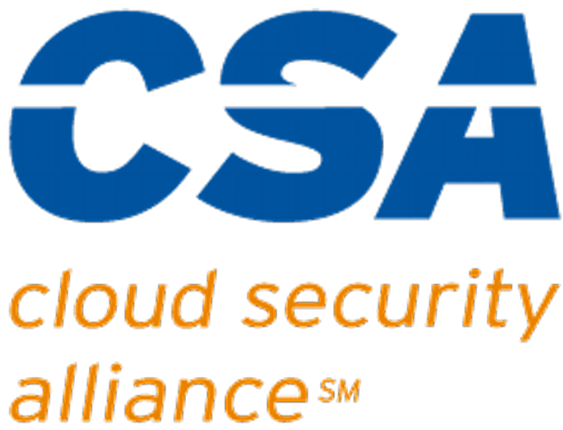
The New Reality of Work
The COVID-19 pandemic accelerated a transition that was already underway: the shift toward flexible, location-independent work models. According to recent studies, 74% of companies plan to permanently shift some employees to remote work, while 55% of employees want to work at least three days a week remotely. This new paradigm has fundamentally changed how businesses approach their IT infrastructure.
At the heart of this evolution is the concept of device agnosticism—the ability for systems, applications, and workflows to function seamlessly across any device, regardless of manufacturer, operating system, or form factor. For businesses adapting to hybrid work environments, device agnosticism isn’t just convenient—it’s essential.
What Device Agnosticism Means for Business
Device agnosticism represents more than just cross-platform compatibility. It embodies a comprehensive approach to IT where employees can work effectively from anywhere, on any device, with consistent experiences and security.
True device agnosticism means:
- Applications and data are accessible across Windows, macOS, iOS, Android, and other platforms
- Seamless transitions between devices without workflow disruption
- Consistent security protocols regardless of device type
- Unified management capabilities for IT departments
- Reliable performance across varying hardware specifications
The Business Value of Going Device-Agnostic
Enhanced Workforce Flexibility
Modern workforces demand flexibility. When employees can seamlessly switch between working on office desktops, personal laptops, tablets, or smartphones, they gain unprecedented flexibility in structuring their workday. This translates to higher satisfaction rates and improved work-life balance.
For businesses, this flexibility becomes a powerful tool for recruitment and retention. Companies offering device-agnostic environments report 21% higher employee retention rates compared to those with rigid device requirements.
Reduced IT Costs
Traditional device management often requires separate IT teams and tools for different operating systems and hardware types. A device-agnostic approach consolidates these resources, reducing overhead costs. Consider:
- 37% reduction in IT support tickets when implementing device-agnostic systems
- Decreased hardware expenditure through BYOD (Bring Your Own Device) policies
- Extended lifespan of existing technology investments
- Simplified procurement processes
- Reduced training costs through consistent user experiences
Improved Business Continuity and Disaster Recovery
The past few years have demonstrated how quickly business operations can be disrupted. Device-agnostic infrastructure provides built-in resilience against such disruptions:
- Employees can instantly transition to alternative devices if primary systems fail
- Work continues uninterrupted during office closures or travel restrictions
- Critical business functions remain accessible during hardware supply chain disruptions
- Faster recovery from localized IT issues
Key Challenges in Building a Device-Agnostic Environment
While the benefits are compelling, transitioning to a device-agnostic model presents several challenges that businesses must address:
Security Concerns
When work happens across various devices—many of which may be personal rather than company-owned—security becomes more complex. Key considerations include:
- Data protection across diverse endpoints
- Securing multiple operating systems with different vulnerability profiles
- Managing authentication across platforms
- Preventing data leakage on personal devices
- Ensuring compliance with industry regulations
Management Complexity
Overseeing a heterogeneous device environment requires sophisticated management approaches:
- Visibility across all device types
- Software distribution to various platforms
- Troubleshooting across different operating systems
- Standardizing policies across diverse endpoints
- Asset management for both company and personal devices
Building Your Device-Agnostic Strategy
1. Cloud-First Infrastructure
The foundation of any device-agnostic strategy is cloud computing. Cloud-based systems offer the accessibility and flexibility required for seamless cross-device functionality.
Key implementation steps:
- Migrate on-premises applications to cloud alternatives where possible
- Implement virtual desktop infrastructure (VDI) for legacy applications
- Develop cloud storage strategies with appropriate access controls
- Establish reliable connectivity solutions for remote workers
- Create redundancy plans for critical cloud services
2. Zero Trust Security Framework
Traditional perimeter-based security fails in device-agnostic environments. Zero Trust architecture, which continuously verifies every user and device, provides a more robust alternative.
Components of an effective Zero Trust approach include:
- Multi-factor authentication across all devices and platforms
- Conditional access policies based on device health, location, and user behavior
- Micro-segmentation of network resources
- End-to-end encryption for all data transmission
- Continuous monitoring and verification
3. Unified Endpoint Management (UEM)
Managing diverse devices requires a consolidated approach. UEM solutions allow IT teams to oversee all endpoints from a single console.
Effective UEM implementation involves:
- Standardizing device enrollment processes
- Creating consistent security policies across platforms
- Automating software updates and patch management
- Implementing remote wipe capabilities for all devices
- Establishing device compliance monitoring
4. Cross-Platform Applications
Application compatibility is crucial for true device agnosticism. Organizations should prioritize solutions that work across all relevant platforms.
Strategies for application management include:
- Web-based applications accessible from any browser
- Native applications with consistent interfaces across platforms
- Progressive Web Apps (PWAs) that combine web and native functionality
- Application virtualization for legacy software
- API-driven architectures that support multiple front-end implementations
Implementation Roadmap: How to Get There
Phase 1: Assessment and Planning
Begin by thoroughly understanding your current environment:
- Audit existing devices and operating systems in use
- Identify critical applications and their compatibility constraints
- Document current security policies and compliance requirements
- Survey employee needs and preferences
- Evaluate bandwidth and connectivity requirements
Phase 2: Pilot Program
Test your approach with a small, representative group:
- Select pilot participants across departments and roles
- Implement cloud solutions for core productivity applications
- Deploy security tools on various device types
- Gather feedback on user experience and performance
- Document support requirements and common issues
Phase 3: Scaled Deployment
Roll out your device-agnostic strategy organization-wide:
- Develop clear policies for device usage and security
- Implement required infrastructure changes
- Migrate applications and data to cloud platforms
- Deploy endpoint management and security tools
- Provide comprehensive training for all users
Phase 4: Optimization and Refinement
Continuously improve your approach:
- Monitor performance metrics across device types
- Gather ongoing feedback from users
- Refine security policies based on threat intelligence
- Optimize application performance on different platforms
- Adjust support processes based on common issues
Future-Proofing Your Device-Agnostic Environment
The technology landscape continues to evolve rapidly. To ensure your device-agnostic strategy remains effective:
- Stay current with emerging device types and form factors
- Monitor changes in operating system security models
- Evaluate new authentication technologies
- Consider the impact of AR/VR and wearable computing
- Prepare for increased IoT integration in business processes
Partnering for Success
Implementing a comprehensive device-agnostic strategy requires expertise across multiple domains. Many organizations find value in partnering with managed service providers who specialize in these transitions.
At Datacate, we help businesses design, implement, and manage device-agnostic environments that strike a balance between security, usability, and cost-effectiveness. Our approach focuses on creating solutions tailored to your specific business needs while leveraging industry best practices.
Conclusion
The shift to remote and hybrid work isn’t temporary—it’s the future of business. By embracing device agnosticism, organizations can create flexible, secure, and efficient IT environments that support this new reality.
Building a truly device-agnostic infrastructure requires careful planning, the right technologies, and ongoing management. However, the rewards, including enhanced productivity, improved employee satisfaction, and greater organizational resilience, make it well worth the investment.
Ready to prepare your business IT for the age of remote and hybrid work? Contact Datacate today to learn how we can help you build a secure, flexible, and future-ready device-agnostic environment.




